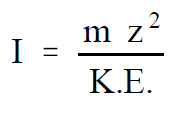
Interaction of Radiation With Matter
 المؤلف:
U.S. Department of Commerce, National Technical Information Service, 1993
المؤلف:
U.S. Department of Commerce, National Technical Information Service, 1993
 المصدر:
The Nuclear Physics and Reactor Theory Handbook
المصدر:
The Nuclear Physics and Reactor Theory Handbook
 الجزء والصفحة:
p 63
الجزء والصفحة:
p 63
 3-4-2017
3-4-2017
 2591
2591
Interaction of Radiation With Matter
Radiation can be classified into two general groups, charged and uncharged; therefore, it may be expected that interactions with matter fall into two general types. Charged particles directly ionize the media through which they pass, while uncharged particles and photons can cause ionization only indirectly or by secondary radiation.
A moving charged particle has an electrical field surrounding it, which interacts with the atomic structure of the medium through which it is passing. This interaction decelerates the particle and accelerates electrons in the atoms of the medium. The accelerated electrons may acquire enough energy to escape from the parent atom. This process, whereby radiation "strips" off orbital electrons, is called ionization. Uncharged moving particles have no electrical field, so they can only lose energy and cause ionization by such means as collisions or scattering. A photon can lose energy by the photoelectric effect, Compton effect, or pair production.
Because ionizing radiation creates ions in pairs, the intensity of ionization or the specific ionization is defined as the number of ion-pairs formed per centimeter of travel in a given material. The amount of ionization produced by a charged particle per unit path length, which is a measure of its ionizing power, is roughly proportional to the particle's mass and the square of its charge as illustrated in the equation below.

where:
I is the ionizing power
m is the mass of the particle
z is the number of unit charges it carries
K.E. is its kinetic energy
Since m for an alpha particle is about 7300 times as large as m for a beta particle, and z is twice as great, an alpha will produce much more ionization per unit path length than a beta particle of the same energy. This phenomenon occurs because the larger alpha particle moves slower for a given energy and thus acts on a given electron for a longer time.
 الاكثر قراءة في مواضيع عامة في الفيزياء النووية
الاكثر قراءة في مواضيع عامة في الفيزياء النووية
 اخر الاخبار
اخر الاخبار
اخبار العتبة العباسية المقدسة


